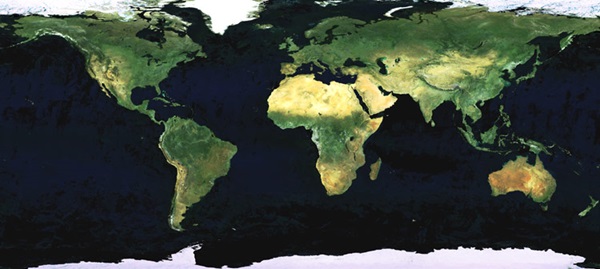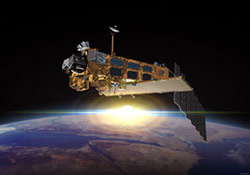Key Takeaways:
On June 27, the European Space Agency (ESA) donated a mosaic of satellite images to the United Nations (UN) in Geneva as a record of 21st-century Earth.
ESA Director of Earth Observation Programmes Volker Liebig presented the gift to UN Director General Sergei Ordzhonikidze, who accepted it on behalf of the UN. The mosaic will be on permanent display in the UN’s Palais des Nations in Geneva.
Envisat is ESA’s environmental satellite and the largest spacecraft built for observing Earth, and it operates at an altitude of about 500 miles (800 kilometers). Since its launch in 2002 from Kourou, French Guiana, Envisat has continuously observed and monitored Earth’s atmosphere, land masses, oceans, and ice caps in visible light and radar with its 10 instruments. “Forests, desert, mountains and oceans are clearly visible,” says Liebig of the images.
MERIS measures ocean color both in open water and in coastal areas as its main mission. Ocean color reveals chlorophyll-pigment concentrations, suspended-sediment concentrations, and amounts of aerosols over marine areas. MERIS’ measurements cover all of Earth about every 3 days.
Envisat’s global land-cover mosaic will provide future generations with unique insight into factors affecting climate change on Earth.











